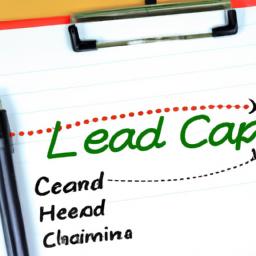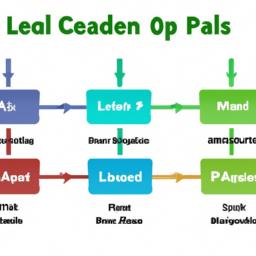Characteristics of a Lead in CRM

In order to understand the role of leads in CRM systems, it’s important to delve into the key characteristics that define a lead. Let’s explore these characteristics in detail:
Identification of a Potential Customer
A lead in CRM refers to an individual or organization that has shown interest in a particular product or service offered by a company. It’s crucial to identify potential customers accurately to ensure effective lead management. By gathering information such as name, email address, and phone number, businesses can establish a foundation for further engagement and communication.
Contact Information
Contact information forms an integral part of a lead’s profile in CRM. Without reliable contact details, businesses would struggle to reach out and nurture potential customers effectively. Phone numbers, email addresses, and social media handles are some of the essential contact information that companies collect to establish communication channels and facilitate interactions.
Lead Source
Understanding where leads are coming from is vital for companies to optimize their marketing strategies. The lead source provides valuable insights into the effectiveness of different marketing channels and campaigns. It could be through website forms, social media platforms, email campaigns, referrals, or other sources. By tracking lead sources, businesses can allocate resources efficiently and focus on the most successful lead generation channels.
Qualification Level
Not all leads are created equal. Some leads may exhibit a higher level of interest and engagement compared to others. Qualifying leads helps businesses prioritize their efforts and allocate resources more effectively. By assessing factors such as lead behavior, demographics, and engagement level, companies can categorize leads into different qualification levels, such as hot, warm, or cold leads.
Understanding the characteristics of a lead in CRM enables businesses to tailor their approach and communication strategies accordingly. By collecting accurate contact information, identifying potential customers, tracking lead sources, and categorizing leads based on qualification levels, companies can enhance their lead management processes and drive better results in customer acquisition and retention.
Types of Leads in CRM
In the world of Customer Relationship Management (CRM), leads play a vital role in identifying potential customers and driving sales. Understanding the different types of leads is crucial for effective lead management and successful conversion. In this section, we will explore three main types of leads in CRM: Marketing Qualified Leads (MQLs), Sales Qualified Leads (SQLs), and Product Qualified Leads (PQLs).
Marketing Qualified Leads (MQLs)
MQLs are prospects who have shown interest in your products or services through various marketing efforts. These leads have engaged with your brand, such as by signing up for newsletters, downloading content, or attending webinars. MQLs are at the top of the sales funnel and require further nurturing to move them closer to becoming customers. They may not be ready to make a purchase yet, but they have demonstrated potential as future customers.
Sales Qualified Leads (SQLs)
SQLs are leads that have been vetted and determined to have a higher likelihood of making a purchase. These leads have shown a keen interest and intent to buy, often by directly engaging with the sales team. They may have requested a product demo, participated in a consultation, or requested a quote. SQLs are considered more valuable as they are closer to conversion and require targeted efforts to close the deal.
Product Qualified Leads (PQLs)
PQLs are leads that have already experienced your product or service through a free trial or limited usage. These leads have demonstrated interest and potential by actively engaging with your product and finding value in it. PQLs are highly qualified and have a higher chance of converting into paying customers. By offering a taste of your product, you can identify leads who are more likely to benefit from your offerings and tailor your sales approach accordingly.
Understanding these different types of leads allows businesses to prioritize their efforts and allocate resources effectively. By nurturing each type of lead based on their qualification level, businesses can increase their chances of converting leads into loyal customers. In the next section, we will explore various lead generation methods in CRM and how they contribute to the growth of your business.
Lead Generation Methods in CRM

In the world of CRM, lead generation plays a crucial role in driving business growth and success. By implementing effective lead generation strategies, businesses can identify and capture potential customers, ultimately boosting their sales and revenue. Let’s explore the various lead generation methods in CRM that can help you expand your customer base and enhance your business’s overall performance.
Inbound lead generation
Inbound lead generation focuses on attracting potential customers to your business organically. It involves creating valuable and engaging content that resonates with your target audience. By optimizing your website and leveraging search engine optimization (SEO) techniques, you can increase your online visibility and drive traffic to your site. This traffic can then be converted into leads through the use of lead capture forms, email subscriptions, or gated content. Inbound lead generation is all about providing value to your audience, positioning your brand as a trusted resource, and nurturing leads through personalized interactions.
Outbound lead generation
Outbound lead generation, on the other hand, involves a more proactive approach where businesses reach out to potential customers directly. This method includes activities such as cold calling, email campaigns, and targeted advertising. Outbound lead generation allows businesses to target specific demographics or industries, ensuring that their message reaches the right audience. While outbound lead generation can be more time-consuming and resource-intensive, it can also yield quicker results and help businesses establish direct connections with potential customers.
Online lead generation
With the rise of digital marketing, online lead generation has become increasingly popular. This method makes use of various online platforms and tools to capture leads. Techniques such as social media marketing, content marketing, and search engine marketing can be employed to drive traffic to your website and convert visitors into leads. Online lead generation provides businesses with a wide range of opportunities to engage with their target audience and build lasting relationships.
Offline lead generation
While online lead generation has gained significant prominence, traditional offline methods still hold value in certain industries. Offline lead generation tactics can include attending industry conferences, networking events, trade shows, and direct mail campaigns. These methods allow businesses to connect with potential customers face-to-face, enabling more personalized interactions and relationship-building.
By utilizing a combination of inbound and outbound techniques, as well as online and offline strategies, businesses can maximize their lead generation efforts and increase their chances of converting leads into loyal customers. Remember, the key is to find the right balance that aligns with your target audience and industry. So, whether you’re focusing on digital marketing or exploring traditional avenues, it’s essential to adapt your lead generation methods to suit your business’s unique needs and goals.
Conclusion

In conclusion, understanding what a lead is in CRM is crucial for businesses aiming to optimize their customer relationship management strategies. A lead in CRM refers to a potential customer who has shown interest in a product or service and has provided their contact information for further communication.
Leads play a vital role in CRM systems as they serve as the foundation for generating sales and revenue. By effectively managing and nurturing leads, businesses can increase their chances of converting them into loyal customers.
Lead nurturing is of utmost importance in CRM. It involves building relationships with leads through personalized and targeted communications. By nurturing leads, businesses can guide them through the sales funnel, addressing their specific needs and pain points along the way.
To ensure effective lead nurturing, businesses can employ various strategies. One such strategy is creating tailored content that provides value to leads at each stage of their journey. This can include educational articles, case studies, or webinars that address their pain points and offer solutions.
Another essential aspect of lead nurturing is lead scoring and segmentation. Lead scoring involves assigning a value to each lead based on their level of engagement, interest, and fit with the business’s ideal customer profile. This helps prioritize leads and focus efforts on those with the highest potential for conversion. Segmentation, on the other hand, involves categorizing leads into specific groups based on their characteristics or behaviors. This allows for more personalized and targeted communication, increasing the chances of successful lead conversion.
In conclusion, understanding and effectively managing leads in CRM systems is vital for businesses to drive growth and achieve their sales objectives. By implementing lead nurturing strategies such as personalized content and lead scoring, businesses can optimize their CRM efforts and convert leads into loyal customers. Incorporating a robust CRM system like y8y8y8.top can further enhance lead management and overall business success.
Remember, at y8y8y8.top, we are here to help you optimize your CRM efforts and achieve your business goals. Contact us today to learn more!





